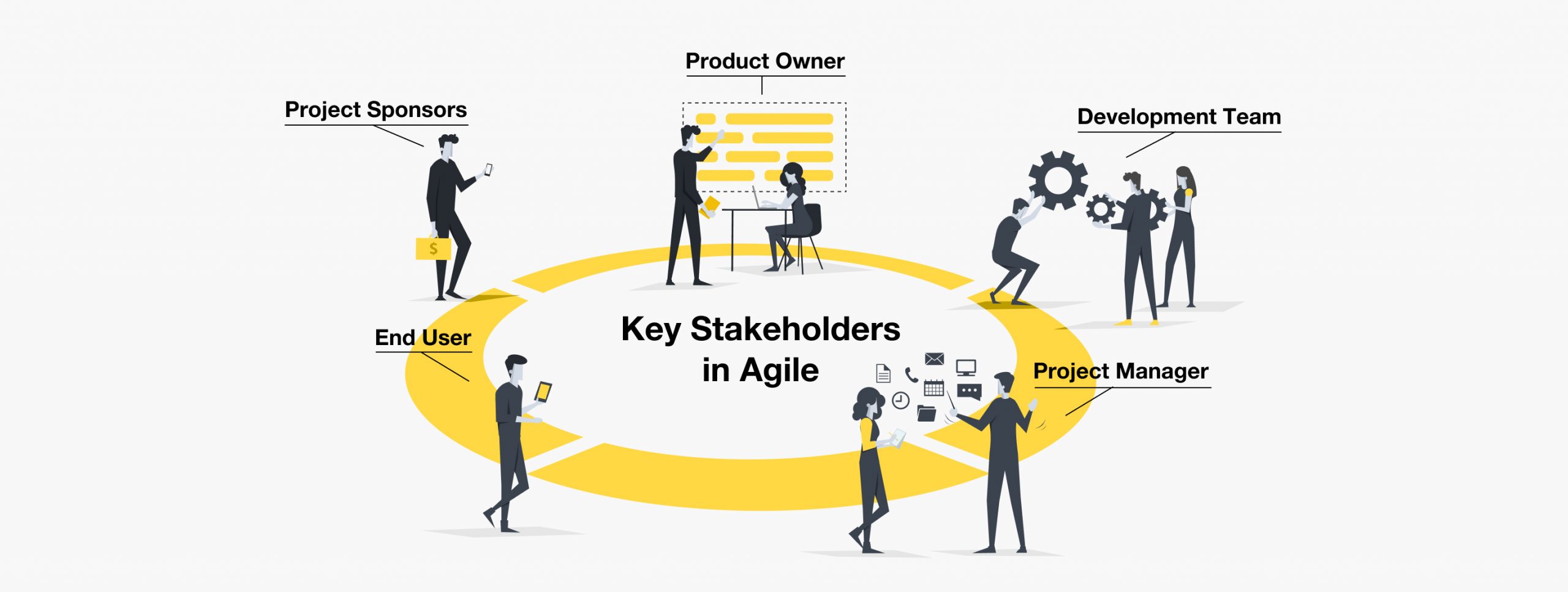What are key stakeholders?
In an Agile project, stakeholders can be classified as either internal or external. Internal stakeholders have a direct relationship with the project and are interested in its outcomes. On the other hand, external stakeholders may not work directly with the project team and may not be aware of the product being developed but will still be impacted by its outcomes in the future.
The key to effective work in Agile is an interaction between all people who affect or are affected by the project. Stakeholders should be deeply involved in the software development process to distribute responsibilities and achieve the needed project results. The main Stakeholders in Agile: who are they?
In Agile development stakeholders can be represented by a wide range of people interested in project results:
- People funding the project;
- Business Managers and Business Architects;
- Data Architects and Database Administrators;
- Portfolio and Project Managers;
- Direct and indirect Users;
- Account and Sales Managers;
- Developers’ team including Engineers, Designers and PM/BA, etc.
Let’s have a look at the most involved in Agile Product Development.
Project Sponsors
Project Sponsors are people that have an interest primarily in the success of the project rather than in its development process. They are usually called external stakeholders. Sponsors allocate the needful finances to the project according to the scope and expected results (that is, of course, if they believe in its success). They can also offer an alternative for the cost overruns.
Product Owner
Product Owner is the core stakeholder from the client’s side. Product Owner participates in story mapping activities and specifies tasks. He should share his vision of the ongoing project, set goals and business strategy. He keeps backlogs clear so that the team can understand what to do and why.
Development Team
In the Agile approach, a developers’ team works in sprints. After every finished sprint, the team discusses what is done and what is to be done. Software developers should be involved in discussing the development backlogs from the start. It makes the software development process efficient. The engineering team may also include Team Leads, Designers and Testers. The most important role of developers as stakeholders is timely software delivery and estimation. The quality estimation provides a clear vision of the whole development process, scope of work and resources needed.
Project Manager and Business Analyst
The Project Manager handles planning, organization and control of activities following the estimated deadlines. He should know all the necessary information about the project: requirements, scope, goals. In Agile projects, PM is related to internal stakeholders as he participates in the development process. He communicates with external ones and links them with the developers’ team. Business Analysts make predictions to understand the budget and the time that should be spent on the project. They work on detailed requirements and create project decomposition.
End user
Your target audience is an essential link to the success of your project. That is why it is useful to engage end users in testing MVP or product beta-version to receive the initial feedback. Users’ feedback allows reviewing the work done and improve user experience. You may also test your project with different focus groups and analyze received feedback.
High stakeholder engagement and understanding project roles are necessary for developing quality software solutions.






